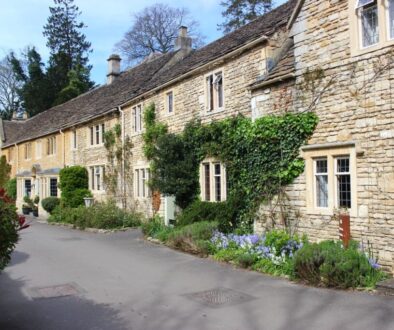Not another consultation…involving rural communities in policy making and service delivery
Many rural communities feel “stuck in the middle” – schools, health centres, social care, leisure and so on aren’t quite delivering what they want but they’re not quite sure what to do about it. Some residents feel this has resulted in things being done ‘to them’ rather than ‘with them’ or ‘for them’. And yet it is by communities working together with policy and decision-makers that better local services can result. How can we involve communities in the design, planning and delivery of rural services in meaningful ways? Jessica Sellick investigates.
One of the big ideas emerging in public policy at the end of the twentieth century was the importance of involving members of the public and users in public services. This can be traced back to civil rights groups in the 1960s and 1970s campaigning against discrimination, poor access to services and the unequal treatment of people with disabilities. This resulted in a social rather than medical model being realised through the ‘care in the community programme’ (following the publication of the Jay Report in 1981) and in the Disability Discrimination Act (1995). Similarly it can be traced back to the establishment of Community Health Councils in 1973, the NHS and Community Care Act in 1990, the Social Care Act 2001, the formation of the Commission for Patient and Public Involvement in Health back in 2003 and latterly Local Involvement Networks (in 2008) and Healthwatch (April 2013).
Attempts to facilitate greater public involvement in services has led to a plethora of terms and jargon: coproduction, asset based community development, putting service users at the centre, empowering people and working in partnership. User involvement – in whatever guise this may be defined – is now routinely applied across the spectrum of service planning, design, commissioning, managing, delivering, monitoring and evaluating.
More recently the policy dialogue has shifted from service user involvement to choice: whether through Government reform programmes (the big society, fairer society) or through reductions in public expenditure (austerity). Here user input is concerned with (a) giving people more control over the services they receive; (b) opening up services to new providers from the public, private and voluntary & community sectors; and (c) encouraging organisations to come up with alternative approaches to the design and delivery of services. And with this shift comes more language and terminology – with words such as transformation, personalisation and active citizenship now commonplace.
Despite this policy focus many questions remain about the means by which members of the public and service users are involved (and how this fits with the operational needs of central Government and Local Authorities); how people want to get involved and whether they are representative of local communities or ‘the usual suspects’; and whether the outcomes lead to good services which reflect what users and communities want. How can we take community and user involvement from an ambiguous idea – and one that can result in the dilution or devaluing of community inputs – into something that is empowering and aspirational? And is there anything specifically rural about how we might do this? I offer three points.
Firstly, it is not always clear what is meant by the term ‘user involvement’ or if/how people identify with it. Does it mean the people receiving the service, the family members or carers that support the person receiving the service, people who used to receive the service, residents who want equitable access to the service (whether they use it or not), organisations that support users, all of the above or something else? Sometimes distinctions are made between an ‘individual user involvement’ wanting their voice to be heard and to act for themselves and ‘community user involvement’ where broader collective action is undertaken to shape local services.
The benefits of user involvement might therefore help the person receiving the service, the organisation delivering it, the organisation commissioning it as well as people living and working in the local area. Such benefits include: having more bang for your buck (a more cost-effective service), improved delivery (better targeting), making a lasting difference in a local area (place-based sustainability), improved relationships between providers and users (with both better aware of constraints such as funding & capacity), an ongoing dialogue (regular communications) and increased user and staff satisfaction. There can be challenges and barriers too – the very people public providers of services are seeking to involve may be hard to reach and/or not have the time and energy to be involved. An evidence briefing in 2016 from the Institute for Fiscal Studies identified issues around sustaining initial enthusiasm and the need to provide individual and community incentives to ensure ongoing involvement.
Secondly, and given these benefits and barriers, what can we do to make sure user involvement works (and works for whom)? When, how and what should we do to involve people, particularly when some people feel over-consulted, the most active and engaged people will move on at some point and others are hard to reach?
People get involved in public services for lots of different reasons: from wanting to do/see something worthwhile happening in their local community or because a service is under threat (i.e., the local library being earmarked for closure). Local Authorities have Statements of Community Involvement (SCI), health bodies have User Involvement Frameworks (UIF) and funders now want local people to be involved in grant applications and projects (e.g. the Lottery vision: ‘people in the lead’).
‘Involvement’ in all of these forums is wide-ranging: from information sharing (users are told what is going to happen once a decision is made) through to consultation (users are asked to offer their views); and from collaboration (users and providers occupying different but equal roles within a service) to participation (users get fully involved at all stages of an activity including having a say in final decisions). Some organisations, particularly health bodies, distinguish between involvement (active involvement by users), engagement (the dissemination of information) and participation (users taking part in services). This has led to different practical models of user involvement – from Sherry Arnstein’s Ladder of Participation in 1969 to more recent examples such as Patient and Public Involvement (PPI) and the Local Government Association’s (LGA) toolkit.
It is worth noting that service users and their supporters are already blogging, vlogging, podcasting, tweeting and creating their own Facebook and other groups in ways that operate outside of these models. Similarly, service staff involvement is not always coming from the top-down or outside of public organisations but can now be found ‘on the edge’ (e.g. NHS England’s Horizons team school for change agents or the Cabinet Office’s open policy lab).
Back in 2007-2008, the House of Commons Public Administration Select Committee carried out an inquiry into public services. ‘Putting people first’ considered whether official consultations were capturing the views of the right people, how users should be more directly involved and instances where involving service users would not be appropriate (because it might lead to inequalities, increased costs or risks). The Committee broke down the distinction above between involving users of public services through ‘consulting directly’ or through their representatives to ‘user-driven public services’: services which mobilise the expertise, time, ideas and willpower of people – achieving outcomes for society rather than a service that is delivered to them.
For Local Authorities and other public organisations this means making choices are where to focus efforts: (a) do you want to involve residents in service planning or involve communities beyond the planning stage to take part in delivery? (b) Are you going to identify and involve champions and locally trusted organisations? (c) Are you going to standardise your approach to user involvement across the organisation or take a more flexible approach? (d) Are you capturing everyone’s views not just the usual suspects and the self-selecting? (e) How are you integrating what communities want to see into your corporate plans and individuals? (f) How are you ensuring people feel listened to, empowered and can see the changes happening following their involvement?
For me what remains missing in these efforts is the user voice, feedback and assessing impact [cost + quality + longer term benefits of service on individuals and communities]. I wonder if this is because it is somehow easier to apply this to services that are consumed individually (health, housing, social care) rather than on a more collective basis (policing, fire and rescue)? Should the overall approach taken by providers be one of empowering as well as addressing needs? Is it about making sure providers are accountable, transparent and subject to scrutiny from local communities? In practice, does this mean that sometimes providers need to begin the process of user involvement much sooner i.e., before involvement actually starts?
Thirdly, is there a rural component to user involvement?
The context is different in rural areas. The rural challenges posed for service design and delivery in rural areas is well-rehearsed among RSN members: lower population density hindering economics of scale, the cost of distance / increased travel, other service delivery costs, and making the commercial case for investment (broadband, transport). All are impeded by diminishing funding and general financial pressures facing Local Authorities, with Government funding formulae not always adapting to recognise rural needs. Two distinctively rural components emerge here for user involvement.
Firstly, providers need to pay attention to the characteristics of a rural community and how these could affect involvement (e.g. population size and dispersal, demography, sparsity, and past experiences). For me this means ‘thinking rurally’ to ensure the user voice is heard, where service providers recognise rural opportunities and challenges around delivery, and where communities get involved and are able to influence decisions. For providers and users this means ensuring there are adequate resources (people, time and money) and some creativity about how this involvement happens.
Secondly, policy and decision makers that do not operate in rural areas do not have a feel for the sheer number of rural residents already actively involved in their local communities (before concepts such as the Big Society or a Fairer Society were ever invented). And equally the transition rural residents have made – from the days of helping out others on an informal and ad-hoc basis to more formal volunteering and taking on the tenure of actually running services – this moving to the ‘user-driven public services’ Government called for back in 2007. Rural communities are delivering all kinds of projects and services – from libraries and broadband, to shops, transport and woodland. Many recognise, are open to and embed user involvement in their work. Rather than feeding into someone else’s organisation rural residents are developing their own approach, getting people together and finding out what works.
For it is in rural communities that the distinction between feeding into someone else’s organisation and developing your own approach to services is being played out. And for policy and decision-makers this presents an interesting debate about whether they make more room to involve users in their existing service networks and/or if they need to start facilitating communities to develop their own. Where are the lines drawn between providers and users – or is this line now blurred? If Government wants to build a genuine person centred system where services are responsive to people’s individual needs and preferences; how is this working in a rural context and (going forward) how can users further influence how services are delivered in new and innovative ways?
………………………………………………………………………………………………..
Following a recent article on money matters, many of you have been in touch highlighting how you are tackling rural financial exclusion.
Over the last eighteen months, Germinate: Arthur Rank Centre, the Plunkett Foundation, the Church of England and the Association of British Credit Unions Ltd. have been working on a rural credit union project. The project report sets out new ways of providing better access to fair financial products and financial education in rural areas. A key outcome of the project is a proposal for a Rural Money website (in partnership with Sheffield Money); offering a wide range of financial provision for different needs as well as links for those needed help with debt – funding is currently being sought for this.
Comoola Tree is building a community of interest and a commercial consortium to secure launch funding for an innovative project which will restore face-to face banking in the 1,500 towns now without a single bank branch and a further 850 with the “last-bank-in-town” status. To find out more please contact Jeff Payne at Comoola by email Jeff Payne on jj.payne@btinternet.com
…………………………………………………………………………………………………
Jessica is a researcher/project manager at Rose Regeneration; an economic development business working with communities, Government and business to help them achieve their full potential. Her current work includes supporting a Lottery programme to help people into paid work; research for the NHS on rural workforce recruitment and retention issues and evaluating a financial capability project. Jessica can be contacted by email jessica.sellick@roseregeneration.co.uk or telephone 01522 521211. Website: http://www.roseregeneration.co.uk/ Twitter: @RoseRegen



